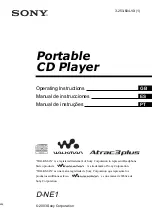
•
Proactively Updating Your Network on page 728
•
Reacting to Vulnerability Announcements on page 728
•
Stopping Worms and Trojans on page 729
Configuring a Network Baseline
A baseline is a static view of your network traffic patterns. This view, which is compiled
from multiple views of traffic over time, represents the normal, known activity that occurs
on your network. By setting a baseline for your network, you can quickly detect any traffic
that deviates from or violates that baseline and take appropriate measures.
Identifying a Baseline
Your devices begin learning your network baseline as soon as the Profiler starts. As your
devices profile the network for the first time, each component appears as new. To avoid
unnecessary log records generated by Profiler alerts, you should ensure that alerts are
not enabled in the
Alerts
tab of the
Profiler Settings
dialog box.
During the learning phase, your devices profile the network hosts, servers, and software
applications that they protect; the Profiler synchronizes profile information from the
devices and creates an initial view of your network. Each time you synchronize the devices,
the Profiler incorporates any new data into this view, creating a more complete, up-to-date
image of your network. You should continue to synchronize data daily until you feel the
Profiler is accurately depicting your normal traffic patterns.
Because all networks are different, the learning phase can range from a few hours to a
few weeks.
Setting a Baseline
When you are satisfied that the Profiler has detected each host, protocol, and port that
you want to profile, you have successfully created a network baseline. By itself, this
baseline view can help you implement software and hardware upgrades, take inventory
for new support contracts, plan for a network ROI investigation, and so on.
However, the true power of your network baseline is to enable your devices to identify
network deviations. The Profiler uses the baseline to identify new or unknown hosts or
software that might represent a network vulnerability. Network deviations can be a simple
application update, or a serious security breach.
When enabled, if the device discovers a new host, protocol, or port, the device generates
a log record, such as PROFILER_NEW_HOST, in the subcategory column of the Log Viewer.
Keeping Your Network Current
Typical networks include multiple servers and hosts, each running different operating
systems and software applications that are important to users on the network. While
this variety helps users accomplish their tasks, it can make it difficult to keep your network
systems current. As new versions or security updates are announced, you must first
determine if your network is affected, locate the affected components, then patch as
appropriate.
727
Copyright © 2010, Juniper Networks, Inc.
Chapter 18: Analyzing Your Network
Summary of Contents for NETWORK AND SECURITY MANAGER 2010.4 - ADMININISTRATION GUIDE REV1
Page 6: ...Copyright 2010 Juniper Networks Inc vi...
Page 36: ...Copyright 2010 Juniper Networks Inc xxxvi Network and Security Manager Administration Guide...
Page 52: ...Copyright 2010 Juniper Networks Inc 2 Network and Security Manager Administration Guide...
Page 90: ...Copyright 2010 Juniper Networks Inc 40 Network and Security Manager Administration Guide...
Page 146: ...Copyright 2010 Juniper Networks Inc 96 Network and Security Manager Administration Guide...
Page 236: ...Copyright 2010 Juniper Networks Inc 186 Network and Security Manager Administration Guide...
Page 292: ...Copyright 2010 Juniper Networks Inc 242 Network and Security Manager Administration Guide...
Page 314: ...Copyright 2010 Juniper Networks Inc 264 Network and Security Manager Administration Guide...
Page 368: ...Copyright 2010 Juniper Networks Inc 318 Network and Security Manager Administration Guide...
Page 370: ...Copyright 2010 Juniper Networks Inc 320 Network and Security Manager Administration Guide...
Page 484: ...Copyright 2010 Juniper Networks Inc 434 Network and Security Manager Administration Guide...
Page 584: ...Copyright 2010 Juniper Networks Inc 534 Network and Security Manager Administration Guide...
Page 588: ...Copyright 2010 Juniper Networks Inc 538 Network and Security Manager Administration Guide...
Page 600: ...Copyright 2010 Juniper Networks Inc 550 Network and Security Manager Administration Guide...
Page 678: ...Copyright 2010 Juniper Networks Inc 628 Network and Security Manager Administration Guide...
Page 694: ...Copyright 2010 Juniper Networks Inc 644 Network and Security Manager Administration Guide...
Page 700: ...Copyright 2010 Juniper Networks Inc 650 Network and Security Manager Administration Guide...
Page 706: ...Copyright 2010 Juniper Networks Inc 656 Network and Security Manager Administration Guide...
Page 708: ...Copyright 2010 Juniper Networks Inc 658 Network and Security Manager Administration Guide...
Page 758: ...Copyright 2010 Juniper Networks Inc 708 Network and Security Manager Administration Guide...
Page 788: ...Copyright 2010 Juniper Networks Inc 738 Network and Security Manager Administration Guide...
Page 882: ...Copyright 2010 Juniper Networks Inc 832 Network and Security Manager Administration Guide...
Page 908: ...Copyright 2010 Juniper Networks Inc 858 Network and Security Manager Administration Guide...
Page 918: ...Copyright 2010 Juniper Networks Inc 868 Network and Security Manager Administration Guide...
Page 920: ...Copyright 2010 Juniper Networks Inc 870 Network and Security Manager Administration Guide...
Page 1005: ...PART 6 Index Index on page 957 955 Copyright 2010 Juniper Networks Inc...
Page 1006: ...Copyright 2010 Juniper Networks Inc 956 Network and Security Manager Administration Guide...
















































